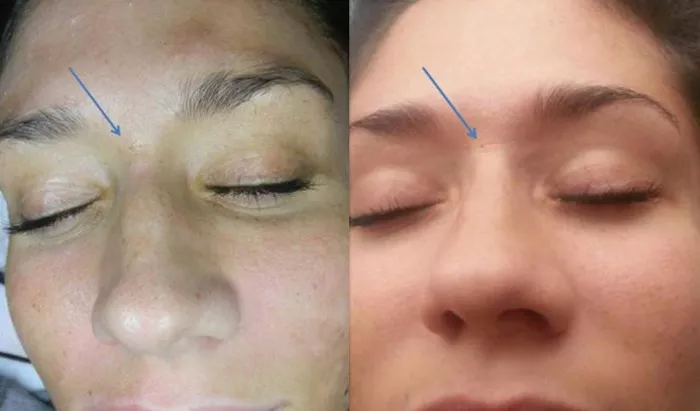Microdermabrasion is a popular cosmetic procedure known for its ability to exfoliate the skin, revealing a smoother and more radiant complexion. While professional treatments are available at spas and dermatology clinics, there are also options for performing microdermabrasion at home. DIY microdermabrasion kits offer a convenient and cost-effective way to maintain skin health between professional treatments. In this article, we will provide a step-by-step guide on how to safely and effectively use microdermabrasion at home.
Step 1: Choose the Right Microdermabrasion Kit
When performing microdermabrasion at home, it is essential to select a reliable and high-quality microdermabrasion kit. Look for kits that include a handheld device or applicator and exfoliating crystals or diamond tips. Read product reviews and check for reputable brands that prioritize safety and efficacy.
Step 2: Prepare Your Skin
Before starting the microdermabrasion process, it is crucial to prepare your skin properly. Here’s what you need to do:
- Cleanse: Begin by cleansing your face thoroughly with a gentle facial cleanser. Remove any makeup, dirt, or impurities to ensure a clean surface for the microdermabrasion treatment.
- Dry: Pat your skin dry gently with a clean towel. It is essential to have completely dry skin before using the microdermabrasion device.
- Avoid Active Skin Conditions: If you have active acne breakouts, open wounds, sunburns, or skin infections, it is advisable to postpone microdermabrasion until your skin has healed. Performing the treatment on compromised skin can worsen these conditions.
Step 3: Familiarize Yourself with the Instructions
Read and understand the instructions provided with your microdermabrasion kit. Each kit may have specific guidelines and recommendations for use. Pay attention to any precautions, warnings, or contraindications mentioned in the instructions.
Step 4: Perform a Patch Test
Performing a patch test is an essential step to ensure that your skin reacts well to the microdermabrasion treatment. Choose a small, inconspicuous area on your face, such as the jawline or behind the ear. Follow the instructions provided with your kit and perform a miniaturized version of the treatment on the patch test area. Monitor your skin’s reaction over the next 24 hours. If you experience any excessive redness, irritation, or discomfort, do not proceed with the full treatment and consult a dermatologist.
Step 5: Start the Microdermabrasion Treatment
Once you have prepared your skin and performed a successful patch test, you can proceed with the microdermabrasion treatment. Follow these steps:
- Hold the Applicator Correctly: Hold the handheld device or applicator according to the manufacturer’s instructions. Ensure a comfortable grip to maintain control during the treatment.
- Begin with a Lower Setting: If your microdermabrasion kit has adjustable settings, start with the lowest setting initially. As you become more familiar with the treatment and your skin’s response, you can gradually increase the intensity.
- Start with Small Sections: Divide your face into smaller sections for easier and more precise treatment. Begin with one section, such as the forehead or cheek, and focus on that area before moving on to the next.
- Glide the Applicator: Gently glide the applicator over the skin in upward or circular motions. Avoid applying excessive pressure, as this can lead to skin irritation. Let the device do the work.
- Avoid Sensitive Areas: Be cautious around sensitive areas of the face, such as the eyes, lips, and nostrils. These areas should be avoided or treated with extra care.
- Monitor Your Skin’s Reaction: Pay attention to how your skin is responding to the treatment. Some redness and mild discomfort are normal, but if you experience severe pain, excessive redness, or bleeding, stop the treatment immediately.
Step 6: Aftercare and Post-Treatment Skincare
After completing the microdermabrasion treatment, it is essential to follow proper aftercare and post-treatment skincare to maximize the benefits and aid in the recovery process. Here are some important steps:
- Cleanse and Moisturize: Gently cleanse your skin to remove any remaining exfoliating crystals or debris. Follow up with a soothing and hydrating moisturizer to replenish the skin’s moisture barrier.
- Avoid Sun Exposure: Protect your skin from sun exposure immediately after the treatment. Apply a broad-spectrum sunscreen with at least SPF 30 to shield your skin from harmful UV rays.
- Avoid Harsh Skincare Products: Refrain from using harsh or abrasive skincare products, such as scrubs or exfoliants, for at least a few days following the treatment. Give your skin time to recover and avoid further irritation.
- Hydrate and Nourish: Drink plenty of water and maintain a healthy skincare routine to keep your skin hydrated and nourished. This can support the healing process and enhance the results of microdermabrasion.
Frequency of Microdermabrasion Treatments
The frequency of microdermabrasion treatments depends on your skin’s sensitivity and response to the procedure. For most people, it is recommended to space out treatments every two to four weeks. However, it is crucial to listen to your skin and adjust the frequency accordingly. Overusing microdermabrasion or performing treatments too frequently can lead to skin irritation and damage.
Consult a Dermatologist
If you have any underlying skin conditions, severe acne, or sensitive skin, it is advisable to consult a dermatologist before attempting microdermabrasion at home. A dermatologist can assess your skin’s specific needs, provide personalized recommendations, and guide you on the safest and most effective way to perform microdermabrasion.
Conclusion
Performing microdermabrasion at home can be a convenient and cost-effective way to maintain healthy, radiant skin. By following the proper steps, choosing a reliable microdermabrasion kit, and prioritizing safety and aftercare, you can enjoy the benefits of exfoliated and rejuvenated skin. Remember to be patient with the process, listen to your skin’s needs, and consult a dermatologist if you have any concerns or questions. With proper care and consistency, at-home microdermabrasion can help you achieve a smoother, brighter complexion.


